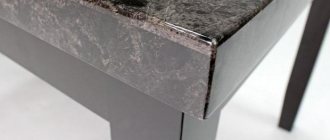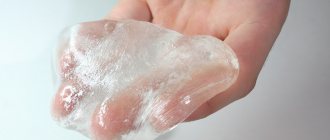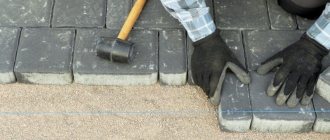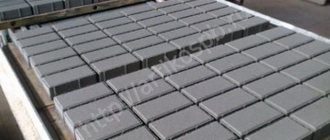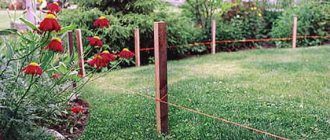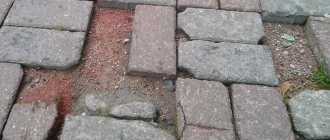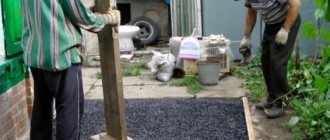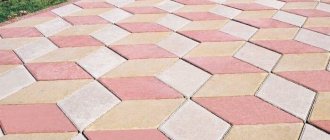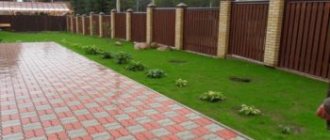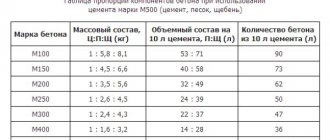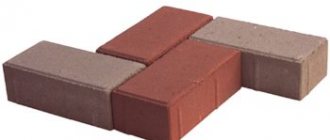Paving slabs have long ceased to be exotic. The material has long been firmly established on city streets and paths of private houses. After all, not one person will refuse to transform their home or garden space. You can purchase tiles, but a more economical option is to make your own.
Register for a free marathon
How to create passive income in 4 days
A marathon where you will create passive income live from scratch and learn specific strategies for investing in apartments, houses, garages, cars and even profitable sites
Begin
How to prepare high-quality paving slabs that will last for decades?
In general, the production of paving slabs is a very profitable business niche, the development costs of which will not become too exorbitant. And today we will look at the proportions of the composition for the manufacture of paving slabs
Preparing a solution for paving slabs at home
Here you will need:
- sand;
- cement;
- pure water.
In the process of home production, there is no particular need for strict compliance with GOST standards. And the mixture is quite simple to prepare. Here are some recipes.
You need to take sand and cement in a ratio of 1.5 to 1. Mix the components thoroughly and only then add water little by little. The result should be a mixture with the consistency of good thick sour cream.
If you are not too comfortable with proportions, then use ready-made numbers:
- sand - 7 ten-liter buckets;
- cement - 2 buckets of grade M 400 (you can also take M 500);
- clean water – 15 liters.
Please note that after mixing, the finished solution should not stick to either the shovel or the walls of the container.
There is a more perfect mixture for “home” paving slabs. In this case, plasticizer C-3 is additionally mixed with the usual ingredients. This is a special additive that ensures frost resistance of the material. The proportional relationship is as follows:
- cement – 550 kg;
- sand – 1650 kg;
- plasticizer – 5.5 kg.
To check the readiness of the mixture, roll it into a log. It should not stick to your palms.
You can also make colored tiles. In this case, it is better to mix two types of solution. One is regular and the other is colored. To make a colored solution, you will need to add crushed stone or microsilica in a volume of 55 kilograms to the original recipe.
Required quantity of components and preparation of solution
For a composition with strength class B25, experienced craftsmen advise making a solution per 1 cubic meter. It will require 390-420 kg of cement, 700-750 kg of sand, 1000-1050 kg of crushed stone and approximately 165 kg of liquid. If you need to give the path color, add a pigment with the desired shade. Mix the components in a specific order. Water with additives is added to the sand, then cement, and finally crushed stone. You need to stir for more than 3 minutes until you get the same type of mixture. A mixture using this proportion of concrete will harden quickly and moisture loss must be minimized. The most reasonable solution would be to use an online calculator. It will help you calculate the required amount of mixture. The composition depends on the required strength of the finished product and its future use.
Several recipe options
- 1 bucket of cement class M400;
- 1 sand;
- 2 and a half - crushed stones (3 buckets of concrete ready for use).
To make concrete with a lower strength class, for example, grade M250, you will need: 2.5 buckets of fine-grained sand, 3.5 crushed stones, and only 1 bucket of cement. The yield of the finished solution will be approximately 4.2 buckets. But for any composition, only river fine-grained sand and gravel with a fraction of no more than 25 mm are used. To impart plasticity to the mass and prevent delamination and cracking during hardening, plasticizers and water repellents should be added in a proportion of 0.5-1% of the total amount of cement. Plasticizers are recommended that are resistant to alkalis - polypropylene, polyamide, glass. As a rule, 1 kg per cubic meter of solution is sufficient.
Industrial production of paving slabs
If you decide to seriously engage in the production of paving slabs, then you simply must adhere to GOST standards. You must take into account all the requirements so that the finished material meets accepted standards. Also, in the future, you must adhere to the previously made choice so that the products do not differ in quality. This is especially true for the cement brand and color.
To prepare concrete, it is best to use cement M 500. Grade M 400 is characterized by higher consumption. Crushed stone and sand are used as fillers. It is best to use granite crushed stone. But if it is not possible to buy exactly this, then it can be replaced with fine-grained concrete.
Cement M 500 of higher quality
Mixtures for making paving slabs cannot be done without special additives. Most often, a dispersant or plasticizer is used. Less often - others. The main purpose of the mineral additive is to improve the quality characteristics of the material, in particular water resistance and durability. Such additional mineral components also ensure the frost resistance of the tiles. The percentage of the additive to the weight of the cement used should be 0.15%.
And now about the dyes. It is better to use inorganic dyes from foreign manufacturers. They have good characteristics. Therefore, 2-5 percent of the mass of cement added to the total mixture is quite enough to give the tiles a good, rich color. Russian paints must be added in the amount of 8%.
The recipe proportions that have been given will help to establish the process of manufacturing truly high-quality material . This will certainly affect the development of business, since quality is always valued. Good luck!
Production of paving stones and requirements for it
High-quality tiles have a number of parameters, including a service life of up to thirty years.
According to GOST 17608–91, finished tiled paths must have the following characteristics:
- frost resistance F300—400;
- compressive strength - 300-400 kgf/cm2;
- water absorption - no more than 4.5%;
- abrasion coefficient - not higher than 0.4 kg/cm2;
- service life - up to 30 years;
- In terms of strength, class is no less than B23.5.
View "GOST 17608-91" or
By varying the raw material it is possible to obtain different brands of paving slabs.
Manufacturing technology
Manufacturers use 2 methods of creating track coverings: vibration casting and vibration pressing. In the first option, the mixture is distributed into plastic molds. Then, using an electric motor, the solution is shaken so that it evenly fills the container. After shaking, all vessels are kept warm for two days. The finished products are removed in a thermal pool filled with water at a temperature of 80 degrees. After this, the concrete products are ready for sale.
The second production method is to use a matrix that is attached to an oscillating vibrating table. The solution is placed on the tape. The punch presses on him with great force. After removing the matrix, only finished products remain on the table. This method is in demand, since all processes are automated and the human factor does not affect production in any way.
Concrete components
For vibratory casting, the classic composition of the solution for paving slabs is used:
- binder – cement;
- water – necessary for hydration of cement stone;
- filler – sand, crushed stone, granotsev;
- additives – plasticizers, dispersants, pigments.
Concrete components for FEM.
Since the volumes of concrete for FEM elements are small, the developer can make his work easier by mixing with a mixer. At home, this will completely replace a concrete mixer. The main tasks when mixing concrete on your own are:
- selection of the correct ratio of components;
- quality control when purchasing them;
- ensuring water-cement ratio W/C = 0.4;
- use of a vibrating table when molding paving slabs;
- painting in bulk or two layers.
Important! All of the information below is valid not only for FEM elements, but also for storm drainage gutters and garden borders, which are made at home by an individual developer.
Cement
To ensure high performance qualities, it is prohibited to add cement with additives to the composition of concrete for paving slabs. It is necessary to use pure Portland cement grade M400 or higher, which has the following properties:
- the product is able to bind 15–22% of the water contained in the mixture during the chemical reaction of cement stone formation;
- plasticity decreases sharply after 45 minutes from the moment of mixing;
- hardening occurs after 7 – 12 hours;
- Strength gain of 70% is completed on the 7th day under normal conditions (humidity within 60%, air temperature + 15 - 20 degrees).
- shrinkage of 1 mm/1 m2 is not taken into account in the manufacture of paving slabs due to the small area of the FEM.
Advice! The main requirement of cement manufacturers is storage according to the instructions on the packaging and production within 3 months. Since already in the 4th month, cement loses 20% of its strength, and after six months the quality deteriorates by 30%.
Water
Unlike pouring a foundation, concrete is mixed in buckets or small tubs. The most important indicator is the water-cement ratio W/C, which affects the performance of concrete:
- frost resistance and moisture resistance;
- porosity and delamination;
- crack formation and hydration time.
Therefore, when mixing independently, the solution for paving slabs should have a proportion of W/C = 0.4. The concrete is hard and has low workability. Therefore, a Superplasticizer is introduced into it or the plasticity is increased in a traditional way - a tablespoon of detergent (for example, Fairy) per batch of a concrete mixer.
Hard concrete.
Advice! Due to the use of the vibration compaction method in the technology, low plasticity, in principle, is not of particular importance. The prepared solution is qualitatively distributed inside the mold by the action of vibrations.
Sand and crushed stone
Fine and coarse filler are added to the mixture to solve several problems:
- reducing the cost of paving slabs;
- increasing strength, wear resistance and hardness;
- increasing water resistance and frost resistance.
In other words, by adding sand and crushed stone of a specific rock to concrete, you can bring the characteristics of cement stone as close as possible to the properties of granite, gravel or dolomite, while giving the product the desired configuration and dimensions. The main nuances of fillers are:
- It is prohibited to prepare a solution for paving slabs from crushed stone/sand with a high clay content;
- Preferably a fine fraction of crushed stone and coarse sand;
- granotsev is the most durable and frost-resistant coarse aggregate;
- the torn shape of quarry sand particles ensures higher adhesion with other components of the mixture than river sand pellets;
Washed quarry sand.
- to reduce delamination, continuous aggregate containing pebbles of different sizes should be used;
- Due to the small size of the tiles, it is better to use crushed stone 5/10.
Advice! To reduce the cost of FEM elements, the mixture should be made from sand with a voidness of 35% maximum. Manufacturers of non-metallic materials are required to indicate this characteristic in the passport and certificate for the deposit. The amount of clay cannot exceed 3% of the mass of the bulk product, silt and other organic impurities - 2%.
Home production
Mixing mortar for paving slabs with your own hands is not difficult. By following all the rules for preparing the mixture, you will receive high-quality material that is in no way inferior to what you purchased.
Preparation for the process of making mortar for paving slabs:
- prepare a vibrating table with a flat surface for work;
- any vegetable oil, or produced, machine oil.
You will need oil to grease the tile molds.
Specific additives for concrete mixture
A separate category for determining the composition of concrete for paving slabs are special additives.
Their application determines the specific features and characteristics, the purpose of the tile itself. For example, when vibrating casting, in order to increase strength, plasticizers are necessarily added to the composition.
To increase resistance to temperature changes and moisture, air-entraining and water-repellent additives are added. And the wear resistance parameters are increased by the addition of polypropylene, polyamide, and glass fibers, which makes it possible to create a special three-dimensional mesh in the solution that improves adhesion between the individual components of the entire solution.
Separately, there are special coloring pigments for concrete, which provide the tiles with a unique and aesthetic appearance. Such components included in the composition of concrete for paving slabs must meet the requirements: protection from the effects of aggressive environments, from the influence of weather and other conditions during operation.
The content of the correct proportions and all production technologies can be determined in this way: when a tile hits a tile, a ringing sound should be formed. This indicates the excellent quality and durability of the tiles. If the sound is dull, then problems may arise during operation.
Most likely, low-quality clay sand, a lot of water, and crushed stone containing a large amount of dust were used in production. If the paving slabs have visible yellowish spots on the inside, then it is also better not to use them, since the clay sand included in the composition greatly deteriorates its quality.
We draw a conclusion. The classic composition of concrete for the production of durable tiles for paths includes:
- Cement M500.; then quartz sand - from 260-720 parts by weight; crushed stone is used - 1000 parts by weight; plasticizers – 100-560 parts by weight; water – 150 parts by weight;
- Cement M200 h; then quartz sand - from 100-560 parts by weight; crushed stone is used - 1000 parts by weight; plasticizers – 100-560 parts by weight; water – 150 parts by weight.
Such ratios will make it possible to produce strong and durable paving slabs that will be resistant to mechanical damage and stress, and adverse environmental conditions. And the plasticizers in its composition will bind the individual components, which will give additional reliability to the material. Specialized dyes are added to the tiles; their use is not necessary.
